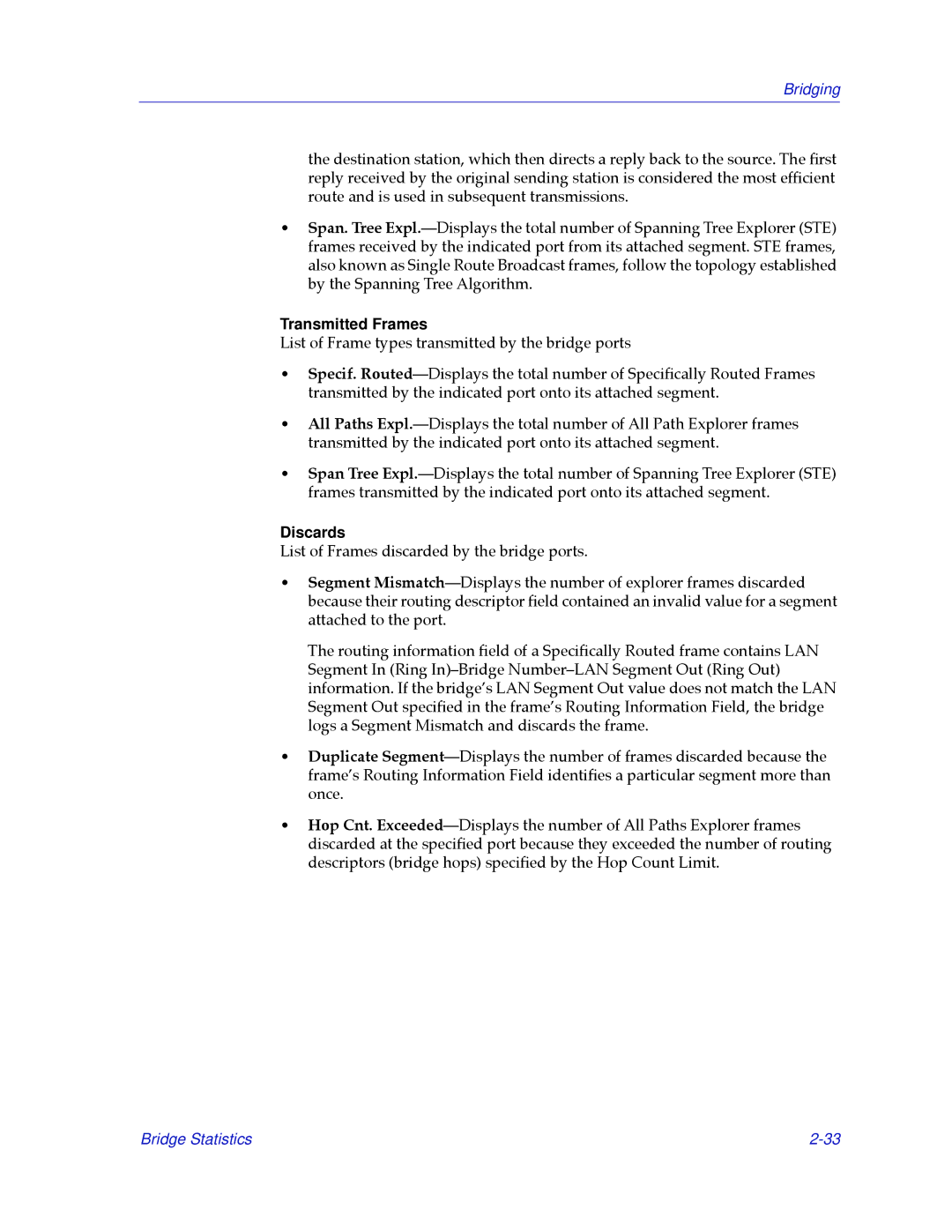Bridging
the destination station, which then directs a reply back to the source. The Þrst reply received by the original sending station is considered the most efÞcient route and is used in subsequent transmissions.
¥Span. Tree Expl.ÑDisplays the total number of Spanning Tree Explorer (STE) frames received by the indicated port from its attached segment. STE frames, also known as Single Route Broadcast frames, follow the topology established by the Spanning Tree Algorithm.
Transmitted Frames
List of Frame types transmitted by the bridge ports
¥Specif. RoutedÑDisplays the total number of SpeciÞcally Routed Frames transmitted by the indicated port onto its attached segment.
¥All Paths Expl.ÑDisplays the total number of All Path Explorer frames transmitted by the indicated port onto its attached segment.
¥Span Tree Expl.ÑDisplays the total number of Spanning Tree Explorer (STE) frames transmitted by the indicated port onto its attached segment.
Discards
List of Frames discarded by the bridge ports.
¥Segment MismatchÑDisplays the number of explorer frames discarded because their routing descriptor Þeld contained an invalid value for a segment attached to the port.
The routing information Þeld of a SpeciÞcally Routed frame contains LAN Segment In (Ring In)ÐBridge NumberÐLAN Segment Out (Ring Out) information. If the bridgeÕs LAN Segment Out value does not match the LAN Segment Out speciÞed in the frameÕs Routing Information Field, the bridge logs a Segment Mismatch and discards the frame.
¥Duplicate SegmentÑDisplays the number of frames discarded because the frameÕs Routing Information Field identiÞes a particular segment more than once.
¥Hop Cnt. ExceededÑDisplays the number of All Paths Explorer frames discarded at the speciÞed port because they exceeded the number of routing descriptors (bridge hops) speciÞed by the Hop Count Limit.
Bridge Statistics |
